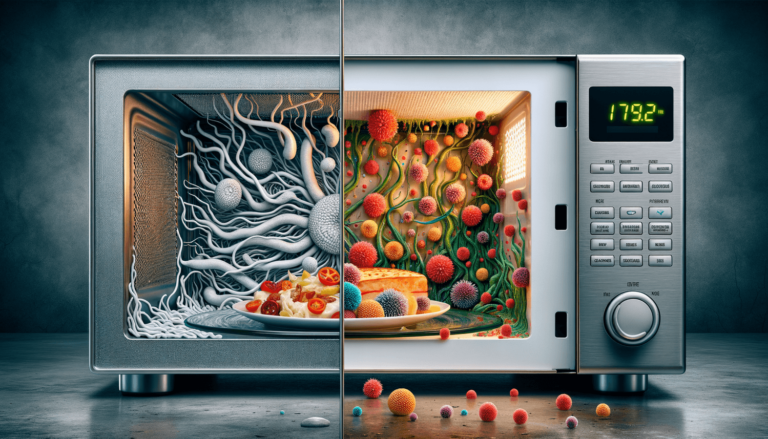

Yes, microwaves can kill bacteria but it’s the heat generated by the microwave that is effective, not the microwaves themselves. When foods are heated to a high enough temperature, harmful bacteria such as E. coli, Salmonella, and Listeria are killed. It’s important to ensure that the food is heated evenly and reaches the safe minimum internal temperature recommended by health authorities. Here at Setting King, we’re diving deep into the topic to give you our trusted advice.
Quick summary
Microwaves work by causing water molecules in food to vibrate, producing heat that cooks the food. This method can effectively kill bacteria when the food reaches the right temperature. However, microwaves can sometimes heat food unevenly, leading to “cold spots” where bacteria can survive. That’s why it’s crucial to follow safe microwaving practices to ensure all parts of the food reach the necessary killing temperatures.
To kill bacteria effectively in the microwave:
Uneven heating is the biggest challenge in killing bacteria with a microwave. Since not all parts of the food will heat at the same rate, certain areas might not get hot enough to destroy bacteria. This risk is especially high when reheating thick or dense foods. Always ensure to cut food into smaller, uniform pieces if possible before microwaving to promote even heating.
Here at Setting King, we always emphasize safety and effectiveness. Remember, while microwaves are incredibly convenient for heating food, they must be used correctly to ensure food safety. Always ensure that food is heated thoroughly and evenly to kill harmful bacteria and avoid foodborne illnesses. Incorporating the mentioned safe microwaving practices is essential for your health and safety.
Does microwave kill bacteria? Yes, but it comes down to the correct use of the microwave, ensuring even heating and reaching the appropriate temperature. By following the safe microwaving practices detailed above, you can enjoy the convenience of microwaving while keeping your food safe from harmful bacteria. Always remember to use a food thermometer as the ultimate tool in ensuring food safety. Stay safe and enjoy the convenience of cooking with your microwave, with confidence and the trusted advice from Setting King.